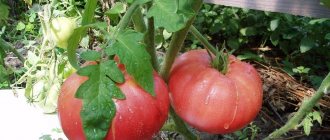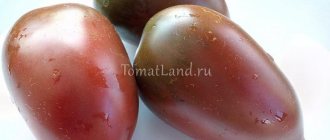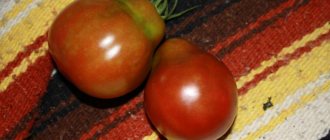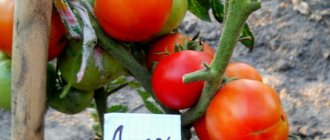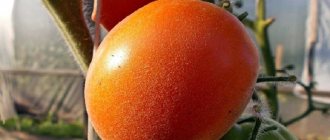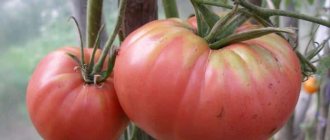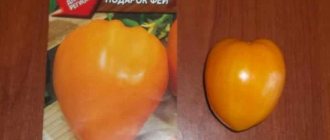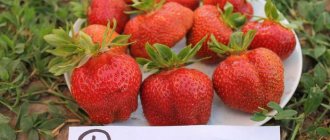Agronomists around the world are working tirelessly to create new varieties of tomatoes. Every year, varieties appear that are resistant to various diseases, unpretentious in care and delight gardeners with high yields. The appearance of the fruit also changes. Exotic variants of the most unexpected colors appear on the markets.
One of the tomatoes that combines an unusual type of fruit, immunity to disease, and amazing taste is the Black Bunch. The bushes of this hybrid are hung with clusters of small dark purple fruits, reminiscent of large currants. Your guests and family will definitely want to try them.
Description of the hybrid
The Black Bunch tomato is a first generation hybrid.
It appeared on the Russian markets relatively recently and has not yet been included in the register. However, it is actively grown by gardeners around the world.
The designation F1 indicates that the Black Bunch is the product of crossing two varieties. To obtain this unusual hybrid, a cultivated cherry tomato was crossed with nightshade crops growing wild in Chile with dark berries.
Look what the Black Bunch looks like in the photo.
Advice . The experience of gardeners growing Black Bunch suggests that the taste of these tomatoes is sweeter and the color is brighter when grown in open ground. After all, these parameters directly depend on the amount of sunlight falling on the bushes.
Distinctive features of Black bunch tomatoes
The main distinguishing feature of the Black Bunch is the unusual appearance of the fruit. They are dark purple, almost black. There is a small red or orange spot on one side.
The taste of Black Bunch is also different from classic tomato. It is sweet, with barely noticeable sourness and a plum aftertaste.
This is interesting! Reviews say that if you grow Black Bunch in the shade, the characteristic fruity taste of its fruit will disappear.
Characteristics
The Black Bunch hybrid surprises not only with the color of the berries. His description will please even experienced gardeners.
Characteristics of the Black Bunch:
| Parameter | Indicators |
| Bush type | Indeterminate. The bush grows up to 180 cm in height. It has powerful, curly stems. The root system is developed not in depth, but laterally. Each inflorescence produces a cluster with 10 fruits. The leaves are dark green, diamond-shaped, wrinkled, and without pubescence. Inflorescence of simple, intermediate type. The first flower is planted at a height of 7 leaves, subsequent ones - after 1 leaf. |
| Growing method | Grown in greenhouses, greenhouses and open ground. |
| Productivity | High. From 3 to 6 kg of tomatoes are harvested from one bush. For 1 sq. m grows up to 18 kg of tomatoes. |
| Fruit | Small ones. One fruit weighs 40-80 g. The fruits are collected in clusters, each with 10-12 fruits. The first tomatoes are larger than the subsequent ones. Ripe fruits are black, with an orange or red side. Inside are red without a white spot. Meaty but juicy. The taste is sweet with plum flavor and sourness. The berries are round in shape with slight ribbing at the base. Each fruit has 1-2 compartments with seeds. The skin is glossy. Contains anthocyanins - a strong antioxidant. Due to their color and size, tomatoes are often compared to large currants and plums. |
| Transportability | High. Tomatoes have a thick skin that prevents them from deforming. They are stored for several months. |
| Ripening time | Mid-season hybrid. The fruits ripen in mid-August. Fruiting continues until the first frost. |
| Disease resistance | Is immune to major tomato diseases. According to reviews from gardeners, this hybrid is not susceptible to late blight. |
Attention ! Manufacturers position the Black Bunch as an early ripening hybrid. However, reviews from gardeners who grew this tomato indicate that it is mid-season.
Appearance
Judging by the reviews of gardeners who planted the Black Bunch, the appearance of the fruits on the seed packaging is highly idealized; in practice, it is not possible to get even tomatoes even within one bunch. The fruits in the cluster are loosely arranged, have different weights and different depths of red-brown or black-violet color, depending on the degree of ripening. But everyone mentions the unusually strong shine of the surface of the fruit, which appears already in the first stages of ripening. The fruit cluster of this tomato resembles a greatly enlarged cluster of black currants, not fully ripe and containing a small amount of berries.
The fruits, if they can be brought to full ripeness, resemble very large cherries or very, very large currants
How to grow seedlings
Seeds are sown at the end of February or the first half of March. In this case, the seedlings have time to develop enough to be transplanted into open ground in the second half of March.
How to properly prepare seeds
Before planting tomatoes, it is necessary to prepare planting material. This will increase germination and prevent the development of diseases.
Preparing seeds for planting:
- All planting material is sorted out. Damaged and dark seeds are removed. To ensure their germination, the seeds are soaked in salted water. Floated copies are considered damaged.
- The seeds are disinfected - treated with disinfectants, for example, soaked for 20 minutes in a solution of potassium permanganate.
- To speed up germination, seeds are soaked in growth stimulants. In addition to store-bought remedies, gardeners use homemade recipes (for example, a teaspoon of honey in a glass of warm water). In this composition, planting material is soaked for a day.
Selecting a container and preparing the soil
A huge number of containers suitable for growing seedlings are sold. Many gardeners make containers for tomatoes from improvised materials:
- top part of cake packaging;
- trimmed six-liter bottle;
- instant noodle packaging;
- disposable deep plates;
- old deep dishes.
For picking tomatoes, choose containers with a volume of at least 300 ml. Stores sell special plastic and peat cups. You can use homemade containers. Most often, seedling pots are made from disposable cups and cut-off 1.5 liter bottles.
All containers, except peat tablets and pots, are treated. To do this, just pour boiling water over them.
Soil mixture is available at gardening stores. It is also prepared independently from peat, turf, ash and humus. It is also disinfected by pouring a solution of potassium permanganate or calcining it in the oven.
Sowing seeds
Gardeners recommend burying Black Bunch tomato seeds deeper than other tomatoes. Therefore, the depth of the grooves for them should be 2 cm.
The recesses for the seeds are made in rows, the distance between which is 3 cm. The distance between the seeds should be at least 2 cm.
Advice . If you want to plant just a few seeds for testing, it is more convenient to use individual peat tablets. The prepared planting material is simply pressed into them. When watered, they increase in size.
The seeds are sprinkled with earth. The soil is moistened with a spray bottle. The container with seeds is covered with glass or film on top and placed in a warm place.
Repeated watering is not necessary until the seeds germinate. If the soil becomes waterlogged, remove the glass.
Seedling care
Seedlings need to be cared for with special care. This is the only way you will get healthy plants:
- Before picking, water the seedlings using a syringe or pipette. This is done to prevent water from getting onto the above-ground part of the plant. After transplanting into separate containers, the tomatoes are watered from a watering can, also without getting on the foliage. Water is used at room temperature.
- After germination, the tomatoes are placed in a well-lit place. It is better if the temperature in it is 12 degrees. After a week, the plants are returned to the heat again.
- The film is removed a week after seed germination. While it remains on the plants, daily ventilation is necessary.
- Fertilizing is done with complex fertilizers. During the entire period of growing seedlings there should be three of them. The first is done three weeks after picking the seedlings, and the last - three days before planting in a permanent place.
- 14 days before transplanting to a permanent place, the seedlings are hardened off by taking them outside.
Growing our Black grapes
Like most varieties of tomatoes, Black Bunch is grown from seedlings. This process begins at the end of February. It is similar to the general rules for obtaining healthy seedlings:
- Disinfection of seeds for 30 minutes in a light solution of potassium permanganate.
- Sowing to a depth of about 1 cm in peat pots, tablets, paper cups, which will avoid the process of picking plants and possible injury to the roots.
- Maintaining a temperature of +22…+24ºС until the emergence of shoots and reducing it by 4–5ºС after the appearance of sprouts.
- Providing adequate lighting for approximately 12 hours a day.
- Moderate watering of the soil so that it does not dry out, and loosening it superficially.
- Fertilize after the appearance of 2 true leaves 2 times a month with an extract from ash. The drug is prepared by pouring hot water (2 l) into 1 full tbsp. l. ash and insisting for a day. This treatment will not only nourish the plants, but also protect them from blackleg.
- Hardening off tomatoes outdoors 7–10 days before planting in a greenhouse or garden bed.
Seedlings are planted in a permanent location at the age of 60–65 days. Place no more than 4 plants per 1 m2. Further care is absolutely the same as for other varieties.
Form a Black Bunch bush of 2–3 stems.
Scheme of formation of tomato bushes with 1, 2, 3 stems
Timely harvesting of fruits is important. The signal for it will be the appearance of an orange speck near the stalk. Prematurely picked Black Bunch tomatoes ripen well, but lose the intensity of taste and smell.
Growing tomatoes
The Black Bunch hybrid is planted in a permanent place at the end of May. It is necessary to ensure that by this time the soil has warmed up sufficiently. This is especially important when planting seedlings in open ground.
Planting seedlings in a permanent place
Before transplanting, seedlings are watered and fed. The soil is also prepared - dug up and etched with a solution of potassium permanganate.
It is important to choose a place for growing plants in advance. Do not use beds on which nightshade crops grew. The best predecessors for tomatoes are legumes, cabbage, and carrots.
To enrich the soil, it is dug up in the fall and mixed with compost, dry chlorine, and ash. Plant remains are removed as they become carriers of insects.
Holes for tomatoes are dug in rows. The optimal distance between rows and holes is 50 cm. It turns out that per 1 sq. m fits 4 plants. To save space, the holes are placed in a checkerboard pattern.
Directly during transplantation, the plants are removed from the pots along with a lump of earth and placed in holes, which are filled with water. Then the holes with seedlings are covered with soil.
Tomato care
Black bunch tomatoes are formed into two or three stems. This way they produce the maximum amount of harvest. The more stems, the more fruits they will bear and the later they will ripen.
Stepchildren are mandatory for the Black Bunch. When carrying out this procedure, wilted leaves and stepsons are removed from the bush. This is done in dry weather in the evening.
Water the tomatoes as the soil dries. In hot summers, 3 waterings per week are sufficient. On cloudy days, the soil is moistened less often.
Attention ! Do not water tomatoes during planting days - this increases the likelihood of infection.
Indeterminate type tomatoes must be tied up. To do this, use wooden supports or trellises.
The first feeding is done 3 weeks after planting tomatoes in open ground. For this, complex fertilizers are used. The following fertilizing is done once every two weeks, alternating mineral and organic fertilizers.
There are also non-standard types of fertilizers. For example, tomatoes are fertilized with iodine, peroxide, yeast, ammonia and boric acid.
Mistakes a gardener can make
Beginner gardeners often make mistakes when growing tomatoes. The most common ones are:
- Watering directly from a well or tap. This can lead to death or wilting of plants. Water used for watering cultivated plants must sit in a container for at least 24 hours.
- Increase watering when there are signs of wilting of tomatoes . This symptom is also typical for flooded plants. Therefore, before increasing watering, make sure that the bushes really do not have enough water.
- Refusal to loosen the soil . When watering, a crust forms on the soil, which prevents air from penetrating into the root system. This can lead to plant death. Therefore, the soil needs to be loosened after each watering and rain.
- Watering tomatoes with a garden hose. With this method of watering, water gets on the tomato greens. This increases the likelihood of plant disease. Tomatoes are watered only at the root.
Diseases and pests
The Black Bunch hybrid is resistant to all major plant diseases . According to gardeners, it is rarely affected even by late blight. Therefore, these tomatoes do not need to be treated with chemicals for preventive purposes.
To reduce the risk of infection of tomatoes, it is enough to treat the seeds with a disinfectant solution before sowing, and also disinfect the soil before transplanting the plants to a permanent place.
But insects often attack Black Bunch tomatoes. To prevent their appearance, the bushes are treated with a soap solution so that the composition gets only on the greenery, but not on the soil. Preventive inspections are carried out weekly, removing pests manually.
Tomatoes Black bunch f1: characteristics of the variety
A variety of early ripeness, a tall bush. Can be grown in closed and open soil. The height of the bush is 1.5 m, depending on where you grow it. It has a strong, strong root system and a powerful stem that curls. It is recommended to cultivate in two or three stems. Technical maturation occurs after 75-90 days.
Tomato leaves are green in color, diamond-shaped, and wrinkled. The bush forms simple inflorescences - tassels (clusters) along the entire stem. Each brush forms 10 or more ovaries.
The tomatoes are round in shape, the ribs are slightly visible. Initially, tomatoes are colored green, then they begin to turn pink. When ripe, but not yet fully ripe, they turn dark purple and resemble eggplants. Fully ripened tomatoes become slightly softer. The intensity of the color depends on the exposure of the fruit to sunlight.
The skin of the fruit is thin, smooth, glossy. The internal contents of the tomato are dense, bright red in color, and have 2 chambers. For Russian residents, the taste of tomatoes is also new. After all, they are sweet and sour, reminiscent of dark plums.
The size of the tomatoes is not very large, the approximate weight is 30-70 g. Since many fruits are set, the harvest from one square weighs 6 kg.
Harvesting must be done on time. There is no need to wait for the fruit to completely blacken. Keep a guide to the stalk - there should be an orange spot at the base of the tomato, this is a signal that the tomatoes are ready for “freedom”. If the harvest is harvested ahead of schedule, the tomatoes may still ripen, but the taste will no longer be the same as that of a ripened fruit.
Features of growing in a greenhouse and open ground
Black bunches in the central zone of our country are grown in a greenhouse or under a film cover. It is important to ensure that the tomatoes in such a room have enough sunlight, otherwise they will not turn black. Every day you need to ventilate the greenhouse by opening the windows.
When growing Black Bunch in open ground, choose the sunniest place on the site. In this case, the color of the fruit will be darker and the taste will be sweeter.
Mulching in open ground is mandatory. The beds are covered with hay, straw or film.
On cold days, tomatoes growing in open ground are covered with film. Black bunch is a heat-loving hybrid.
Agrotechnical nuances
This tall plant is perfect for growing in a greenhouse, and residents of the southern regions can cultivate it in open ground.
With the arrival of spring, place the purchased seeds in a manganese solution for a while and sow them to a depth of 2 cm in rows, having prepared a loose and nutritious substrate in advance.
Cover the container with film and make sure that the room temperature does not fall below +25 ᵒC. Do not forget to moisten and ventilate your plantings, and as soon as 3 well-developed leaves appear, the seedlings can be planted by feeding them with mineral fertilizers.
When the seedlings reach the age of 50 days, they can be transferred to the site. Form the bush into one stem, and perform pinching approximately once every 10 days.
Tie up as needed and fertilize according to schedule. Caring for this variety is easy. Like other tomatoes, it requires regular watering, weeding and loosening.
Among its main advantages are resistance to diseases - rot, cladosporiosis. Black bunch is also resistant to late blight
Another important property is good preservation during transportation, and the keeping quality of tomatoes is also excellent.
I am sure that such an unusual tomato cannot but interest lovers of this vegetable, especially those who are looking for something exclusive. If you have already been lucky enough to taste the harvest from your garden, share your experience with me and the readers. Good luck and good harvest to everyone!
Harvesting and application
Tomatoes will ripen at the end of July or mid-August. The fact that the harvest is ripe is indicated not by the black color of the fruit, but by the presence of a yellow or orange barrel.
The fruits are collected in whole clusters, cut with a knife or torn off by hand.
The Black Bunch harvest is used for fresh consumption and preservation. Black tomatoes soaked in brine change color to brown. Feedback from farmers suggests that fresh tomatoes can be stored until the New Year holidays.
Fruit characteristics
Red Bunch tomatoes are early ripening varieties. The harvest can be harvested 90–100 days after the first shoots appear.
A lot of brushes form on the tomato. On the first few clusters, 40-55 fruits are formed, then 20-30. Productivity is good.
The tomatoes are not large, about 40 grams. The shape of the fruit is oval. The pulp is juicy, tender, with a pleasant tomato aroma. The skin is smooth, not ridged, and quite dense. Unripe fruits are light green in color; as they ripen, they acquire a bright red hue; there is a small green spot near the stalk.
Vegetables produce a small amount of seeds and contain a minimal amount of dry matter. Tomatoes of the Red Bunch variety are suitable for preparing salads, eating fresh, and canning as a whole. You can use them to prepare delicious tomato juices, lecho and adjika.
Advantages and disadvantages
Benefits of Black Bunch tomatoes:
- immunity to diseases;
- unusual color;
- unusual taste;
- high yield.
Among the disadvantages, we can note the need for gartering and pinching tomatoes. Some gardeners do not like the specific taste of this hybrid.
Pest and disease control
The Black Bunch variety does not suffer from late blight, but from other tomatoes it can become infected with viruses or bacteria. Treating bushes with Bordeaux mixture and urea protects tomatoes from disease infection.
If prevention is ineffective, tomatoes are sprayed with potassium permanganate, boric acid, and ash. If necessary, use fungicides and antiviral drugs, but do this long before harvesting the fruits.
To cope with pests, herbal decoctions are prepared and biological agents are used.
Reviews from gardeners
Reviews about the Black Bunch hybrid are mixed.
Valeria Kiryakova, Krasnodar: “Black bunch is an unusual hybrid with black tomatoes. They will surprise their family and friends with their appearance. Their taste is sweet, with a fruity aftertaste. The first time I grew it, I couldn’t determine the stage of fruit ripeness and picked unripe tomatoes. As it turned out, ripeness is indicated not by the black color of the fruit, but by the red or orange side.”
Inga Guseeva, Kirovograd: “I bought Black Bunch tomatoes because of their unusual color. I grew it in open ground in the sunniest part of the garden. I didn't like the taste, too sweet, not tomato-like. The price is high, I paid 150 rubles for 10 seeds.”
Features of agricultural technology and impressions of gardeners
To fully demonstrate all the qualities that Dutch breeders put into the hybrid, you should adhere to the following rules:
- time for sowing seeds is the end of February - the first ten days of March;
- depth of planting material is 1-2 cm;
- picking after the appearance of 2-3 true leaves;
- two or three times feeding of seedlings with complete fertilizer;
- hardening of seedlings 7-10 days before the expected date of planting in the ground;
- 3-4 young plants are planted per 1 sq. m. fertile soil (seedling age 55-70 days);
- form into 1-2 stems.
Reviews about the tomato are mixed - from complete hostility to delight. Here are some of them.
Ekaterina from the Tula region: “I saw this tomato in the photo back in winter, and could barely wait for the start of the summer season. I grew 3 bushes in a greenhouse, next to yellow and red varieties. Incredible beauty! There is absolutely no sourness in the taste! This is unusual, but oddly enough, my children and I really liked the taste. But my husband refused to eat them after he tried them once.”
Igor from the Leningrad region: “The seeds are a little expensive, but I like to experiment, so I planted a couple of bushes. Unfortunately, I didn't have time to try them. Late blight did it for me.”
Evgeniy from the Moscow region: “A beautiful, very impressive tomato on the bush. But to me it's tasteless. A plum is not a plum, but it cannot be called a tomato either. My wife rolled these interesting tomatoes into jars, so they somehow faded. There are still some seeds left, but I’m not sure I’ll plant them next season.”
To complete the picture, we recommend watching a thematic video about this controversial but spectacular tomato hybrid Black Bunch.
